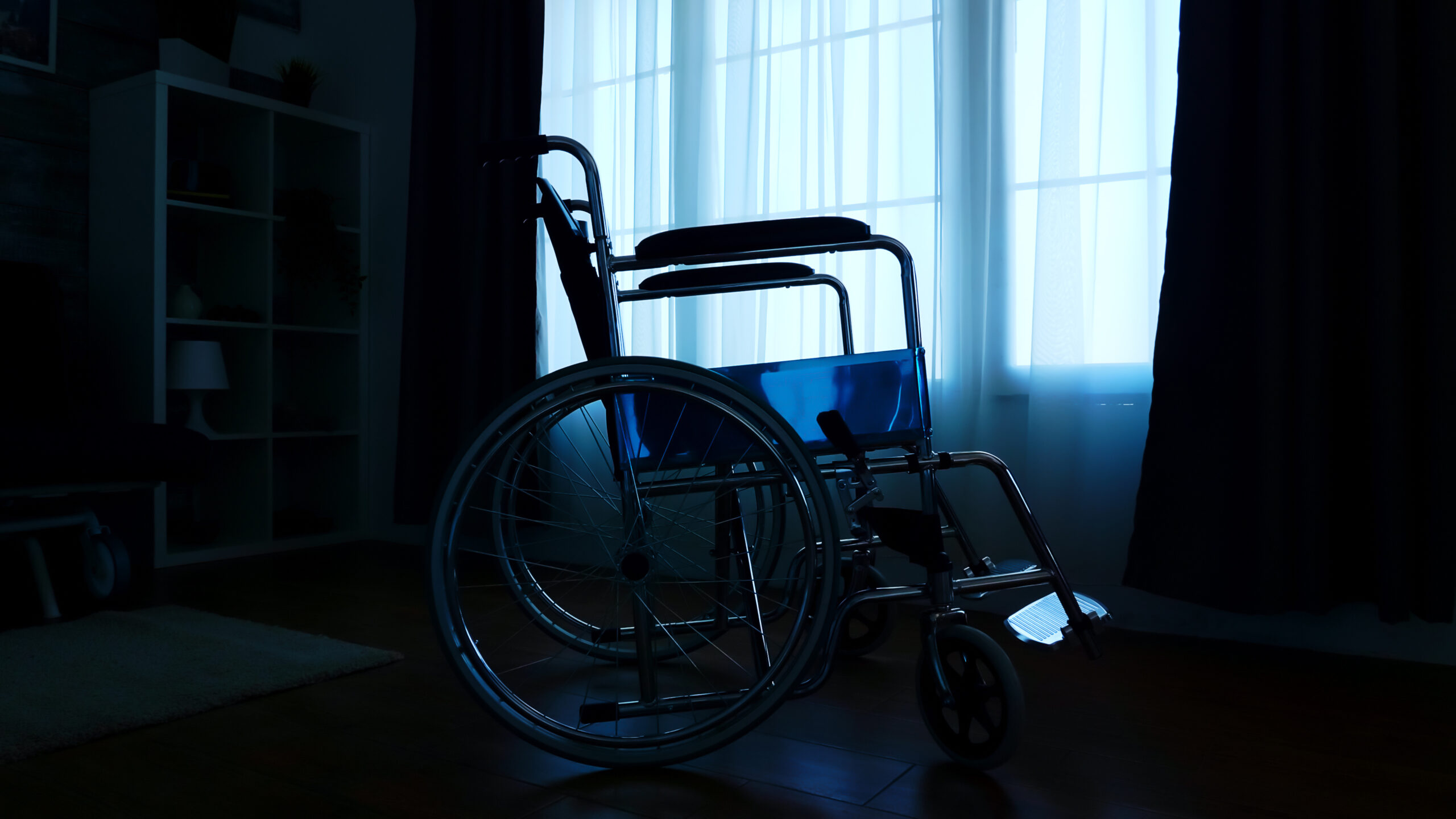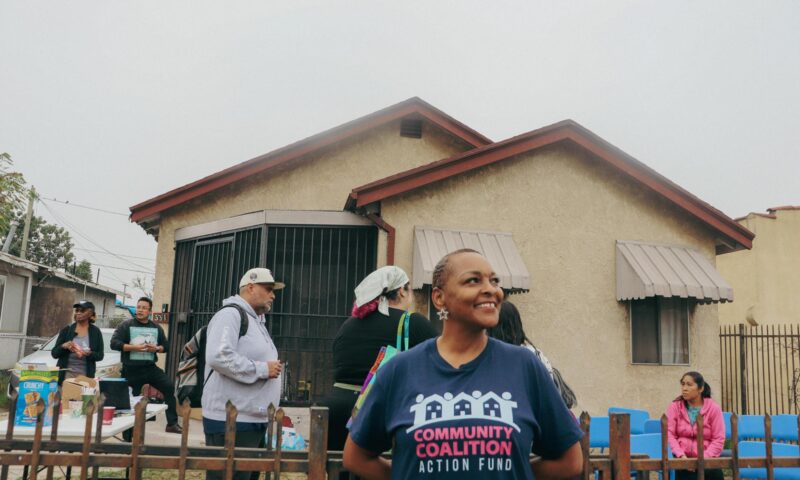Daphne Dunstan is the first one up in her Benicia, California, apartment. She knows her son William will wake soon, and she’ll need to help him get dressed, prepare breakfast and be ready for when the bus comes by to pick him up. Soon after he leaves, Dunstan rouses William’s younger brother, Edward — “Not a morning person,” she notes with a chuckle — and the routine begins again.
It is in many respects a typical family juggling act, one that Dunstan knows well — she has been doing it for more than two decades. She makes sure her sons get the vitamins and medicines they need, and later she’ll prepare different food for each of them, as William enjoys his mother’s traditional Filipino dishes but Edward doesn’t. In the evening, Dunstan and her husband help them bathe and get ready for bed. Occasionally, both of her sons sleep through the night, but not often.
“I don’t sleep, really deep sleep, in case they wake up,” Dunstan says. “I’m afraid something will happen — like they’ll do something in the kitchen, accidentally burn the house. I sleep light.”
This is Daphne Dunstan’s life with two autistic sons. William is 23 years old, Edward 21. William’s autism is more severe, but both brothers require constant care. Daphne, a pharmacy technician by trade, long ago realized that she needed to be available to her sons at all times, and ever since their diagnoses when each was young, that is exactly what she has been.
She is a walking advertisement for why California’s In-Home Supportive Services program exists. Created in the 1970s, IHSS pays providers — typically family members — to deliver the kind of labor-intensive, long-term and loving care that would otherwise fall to the state to handle. Dunstan’s staying home means that William and Edward don’t need to be placed in skilled nursing facilities or care centers.
All of which leaves Dunstan baffled as to why In-Home Supportive Services is one of the programs on Gov. Gavin Newsom’s budget chopping block. “I know we’re facing a budget deficit. I understand that,” she says. “But why attack low earners like us, the parents who help the state save a lot of money?”
* * *
That is the question of the hour. The creation of In-Home Supportive Services had its roots in a compassionate-care approach to disabled, blind or elderly Californians, allowing those people to remain safely in their own homes or with family rather than being shuffled through the nursing care system. But it serves a valuable second purpose: It is far, far more cost effective for the state to pay an IHSS provider than to fund skilled nursing care, especially with the state facing a significant nursing shortage.
According to a 2020 report by the California State Auditor, nearly half of the more than 591,000 IHSS recipients qualify for a nursing home level of care and meet the Medi-Cal standards of eligibility — meaning they have little or no ability to pay for such care. The auditor found that, for those people, IHSS saves the state between $22,000 and $153,000 per person each year versus the cost of institutional long-term care. (The wide variance accounts for the range of impairment and amount of care needed.)
Still, when Newsom’s staff went looking for ways to address an additional $12 billion budget deficit for the coming fiscal year, In-Home Supportive Services popped up on the radar fairly quickly. Newsom’s May budget revision includes proposed funding cuts to the system that could have a brutal impact on its ability to continue delivering quality, cost-effective care.
Newsom’s revised budget hits IHSS two ways. It would cap the hours for which a care provider can be paid at 50 per week, down from the current limit of 66 — that is, it would cut roughly 64 hours of overtime per month for workers at that upper limit. And it would reinstate an “asset limit” for Medi-Cal recipients, which had been eliminated only last year, under which anyone with more than $2,000 in assets no longer qualifies for the state’s version of Medicare. For a couple, the limit is $3,000.
“Those asset limits were written in the 1980s,” says Brandi Wolf, policy and research director at Service Employees International Union Local 2015, on whose regional board Dunstan serves as a vice president. Their union, along with United Domestic Workers of America Local 3930, represents hundreds of thousands of IHSS workers. (Disclosure: SEIU and UDW are financial supporters of Capital & Main.)
The asset test was established in 1989, and its limits remained unchanged until being increased in 2022. Last year, they were abolished in favor of income limits. Now Newsom wants to return the limits to the 1989 figures, “and today $2,000 might only represent part of one month’s rent,” Wolf says.
The union claims that 23,000 SEIU members who are currently paid for 66 hours per week would see a 30% cut in their monthly income. Another 70,000 members, who are paid for somewhere between 55 and 66 hours per week, would experience at least a 12% pay hit, the union says. Capital & Main cannot independently confirm those figures.
“I calculated everything. We could not afford the cut,” Daphne Dunstan told me. “I would have to take the boys to a nursing home or group home, because I’d have to go back to pharmacy work. At that point, it starts costing the state more money to care for them. It just doesn’t make sense.”
* * *
Dunstan, 63, is part of a subset of In-Home Supportive Services workers who are approved for extra hours because they’re caring for more than one person. She’s currently paid for 90 hours per week, and 50 of those are overtime, valued at time and a half. The revised budget proposal would represent an outsized hit for her and her husband, 72, who is retired and receives a small Social Security payment.
But Dunstan’s higher hourly total is part of the point of this program. Any IHSS worker who is paid for more than 40 hours per week means that they’re caring for someone who has significant or severe levels of need. For most such workers, even 66 hours per week doesn’t come close to compensating how many hours they actually put in. The California auditor found that nearly 75% of IHSS providers statewide are family members, and for some of them it’s often closer to round-the-clock involvement.
Dunstan has a few hours, when William and Edward are at the adult day programs provided by Solano County’s North Bay Regional Center, in which she and her husband can shop, pay bills and run other errands. Otherwise, she says, “It’s never-ending. But who else is going to give them the care they need? I’m their mother.”
For any In-Home Supportive Services recipient whose provider winds up with reduced hours, one theoretical solution is to hire a second provider to fill in. But California has long faced a significant shortage of IHSS workers, in part because of the relatively low wages set by individual counties, and at any rate Dunstan said it’s the overtime component that makes it feasible for her to stay home at all. (Dunstan is paid $17.70 an hour.)
Newsom’s office estimates the state could save $900 million in 2025-26 and about $707 million per year after that by capping IHSS pay at 50 hours a week, reinstating asset limits and excluding any undocumented resident who isn’t already enrolled in the program. The utter unknown is how many families, like Dunstan’s, would conclude that they can’t live on what they’d be paid under the new system, and would wind up placing their family members in care centers at astronomically higher costs to California.
“I don’t want to do that,” Dunstan says. “I love my kids, and it would tear my family apart.” It is also part of the reality of a budget crisis that is forcing decisions, for better and worse, about where the state should spend its money.
Copyright 2025 Capital & Main


 Latest NewsNovember 19, 2025
Latest NewsNovember 19, 2025
 Latest NewsNovember 18, 2025
Latest NewsNovember 18, 2025
 The SlickNovember 18, 2025
The SlickNovember 18, 2025
 Latest NewsNovember 17, 2025
Latest NewsNovember 17, 2025
 Column - State of InequalityNovember 21, 2025
Column - State of InequalityNovember 21, 2025
 StrandedNovember 25, 2025
StrandedNovember 25, 2025
 Column - State of InequalityNovember 28, 2025
Column - State of InequalityNovember 28, 2025
 The SlickNovember 24, 2025
The SlickNovember 24, 2025

